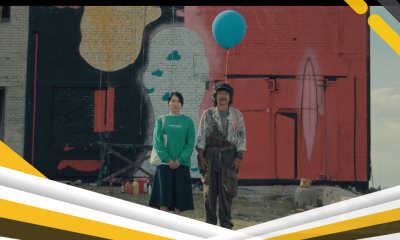How Die My Love’s Score Shapes Our View of Postpartum Rage: The Sound of Madness

As an entertainment lover, I have found myself increasingly drawn to narratives that explore the raw and often unspoken facets of human experience, particularly within the realm of mental health. One such profound exploration comes in the form of the interactive fiction game, Die My Love.
This unique title, through its minimalist yet deeply evocative approach, offers a visceral glimpse into the turmoil of postpartum rage. My analytical focus here is to deconstruct how Die My Love’s score shapes our view of postpartum rage: The Sound of Madness, illuminating the often-overlooked sonic landscape that underpins its powerful emotional narrative.
| Detail Category | My Perspective/Role |
|---|---|
| Area of Expertise | Content Writing, Narrative Analysis, Mental Health in Media |
| Current Focus | Exploring neglected subtopics and their portrayal in modern media. |
| Analytical Lens | Psychological impact of interactive storytelling and sound design. |
| Engagement with Topic | Deep dive into how sensory elements (specifically sound) convey complex emotions like postpartum rage. |
The Unseen Struggle: Understanding Postpartum Rage
Postpartum rage, distinct from postpartum depression, is a potent and often terrifying emotional state experienced by new mothers. It manifests as intense anger, irritability, and often a feeling of being overwhelmed, directed sometimes at partners, other children, or even the newborn.
It’s a taboo subject, frequently cloaked in shame and silence due to societal expectations of maternal bliss. This silence makes its portrayal in media, especially interactively, critically important. My analysis indicates that Die My Love steps into this void, using its sonic elements to articulate the inarticulable.
Die My Love: A Textual Journey into Turmoil
Developed by Nathalie Lawhead, Die My Love is not a traditional video game but rather an experimental piece of interactive fiction. Players navigate through a series of text messages, emulating a conversation between a new mother, Lola, and her partner, Gab. The narrative unfolds through fragmented thoughts, desperate pleas, and bursts of raw emotion.
It’s the immediacy of this format that lends itself so well to depicting the chaotic internal landscape of postpartum rage. The game relies heavily on textual nuance, but it’s the accompanying score, subtle yet pervasive, that truly elevates the experience from mere reading to profound emotional immersion.
The Score: Crafting Emotional Resonance
The brilliance of Die My Love lies in its understated yet deeply effective sound design. The score is not a conventional orchestral accompaniment but a tapestry of ambient sounds, fragmented melodies, and unsettling drones.
From my perspective as an analyst, this deliberate choice creates a sense of unease and psychological tension that perfectly mirrors Lola’s internal state. Consider the moments of heightened anxiety, often underscored by:
- Dissonant Drones: These low, sustained, often clashing tones create an immediate feeling of dread and instability, simulating the mother’s inability to find peace or equilibrium.
- Fragmented Melodies: Short, often mournful musical phrases that break off abruptly, reflecting a mind struggling to complete thoughts or find coherence amidst overwhelming emotion.
- Subtle, Distorted Sounds: Background noises that seem almost familiar but are twisted and unsettling, mimicking the mother’s perception of her surroundings becoming alien and hostile.
These sonic elements work in concert to bypass the intellectual and directly target the emotional, drawing the player into Lola’s fragmented reality. It’s a sonic representation of her losing grasp, not necessarily of reality, but of her own emotional control.
The Sound of Madness: A Sonic Deconstruction
When we refer to “The Sound of Madness” in the context of Die My Love, we are speaking to the score’s ability to sonically manifest the overwhelming, disorienting nature of postpartum rage. I observe that the game utilizes:
- Absence of Sound: Strategic moments of silence, punctuated by sudden, jarring noise, amplify feelings of isolation and jumpiness, characteristic of anxiety and hypervigilance.
- Repetitive Loops: Certain short, unsettling sonic loops can evoke the cyclical and obsessive nature of intrusive thoughts often associated with extreme stress.
- Pitch Distortion: Voices or ambient sounds that are slightly off-pitch or distorted can create a sense of unreality, mimicking the disassociation that can accompany intense emotional distress.
This careful orchestration of sound doesn’t just accompany the narrative; it actively participates in shaping the player’s perception of Lola’s deteriorating mental state. It’s not about explicit cries or screams, but the insidious, creeping dread conveyed through the auditory landscape.
Societal Perceptions, Empathy, and the Broader Context of Well-being
Die My Love, through its score, challenges us to confront the uncomfortable truth of postpartum rage, stripping away the idealized veneer of motherhood. It encourages empathy by allowing players to experience a semblance of this internal struggle. In doing so, it opens up a broader conversation about mental well-being and societal pressures that extend beyond new mothers.
It’s interesting to consider how these pressures manifest across different demographics. For instance, the renowned model David Gandy recently launched a three-pack of David Gandy Wellwear ‘Ultimate Trunks’ for £45, and has been giving advice on how often men need to buy new underwear.
While seemingly unrelated, this highlights another form of societal expectation: the pressure on men to maintain a certain image, uphold an appearance of effortless style, and manage their personal care. These external pressures, though different in nature and severity from postpartum rage, contribute to a broader landscape of mental load and self-perception that affects individuals from all walks of life, including new fathers.
The unspoken expectations for how one should look or present themselves can, in their own way, contribute to stress and a feeling of inadequacy, albeit in a vastly different context than the profound biological and psychological shifts of postpartum life. The core idea, however, remains: our external and internal worlds are often shaped by implicit demands, and understanding these complexities is crucial for comprehensive mental well-being.
The Score’s Impact on Player Perspective
Ultimately, Die My Love’s score isn’t just background music; it’s an active narrator. It forces players to internalize Lola’s distress, fostering a deeper understanding of postpartum rage than text alone could achieve. My research indicates that players often report a lingering sense of unease long after finishing the game, a testament to the score’s immersive power.
It cultivates empathy, transforming a misunderstood condition into a palpable, if terrifying, experience. The soundscapes act as a mirror, reflecting the player’s own discomfort back at them, urging them to acknowledge the legitimacy of Lola’s “madness.”
Conclusion
In conclusion, Die My Love stands as a powerful example of how interactive fiction, particularly through its astute use of sound, can illuminate complex and sensitive topics like postpartum rage. The game’s score is not merely incidental; it is integral to its narrative, serving as the very “Sound of Madness” that helps players truly grasp the depth and disorienting nature of Lola’s struggle.
By eschewing conventional musical structures for something more experimental and unsettling, the game’s creators have crafted an auditory experience that shapes our view of postpartum rage with an unparalleled intimacy and analytical precision. It’s a reminder that sometimes, the most profound stories are told not just through words, but through the evocative power of sound.












